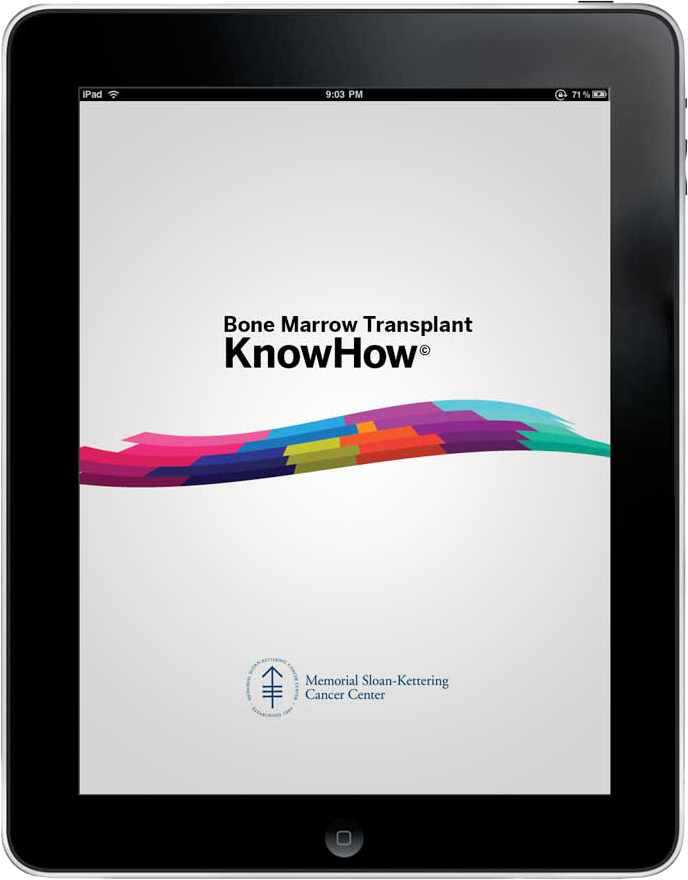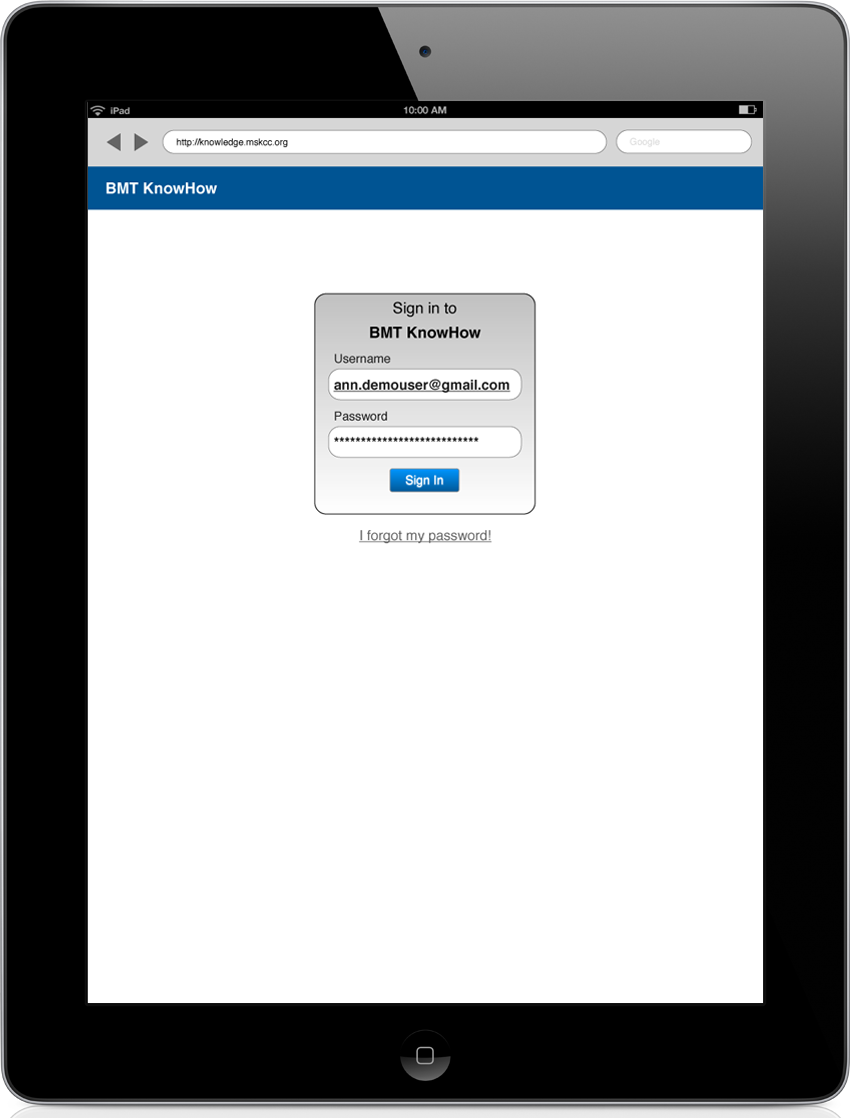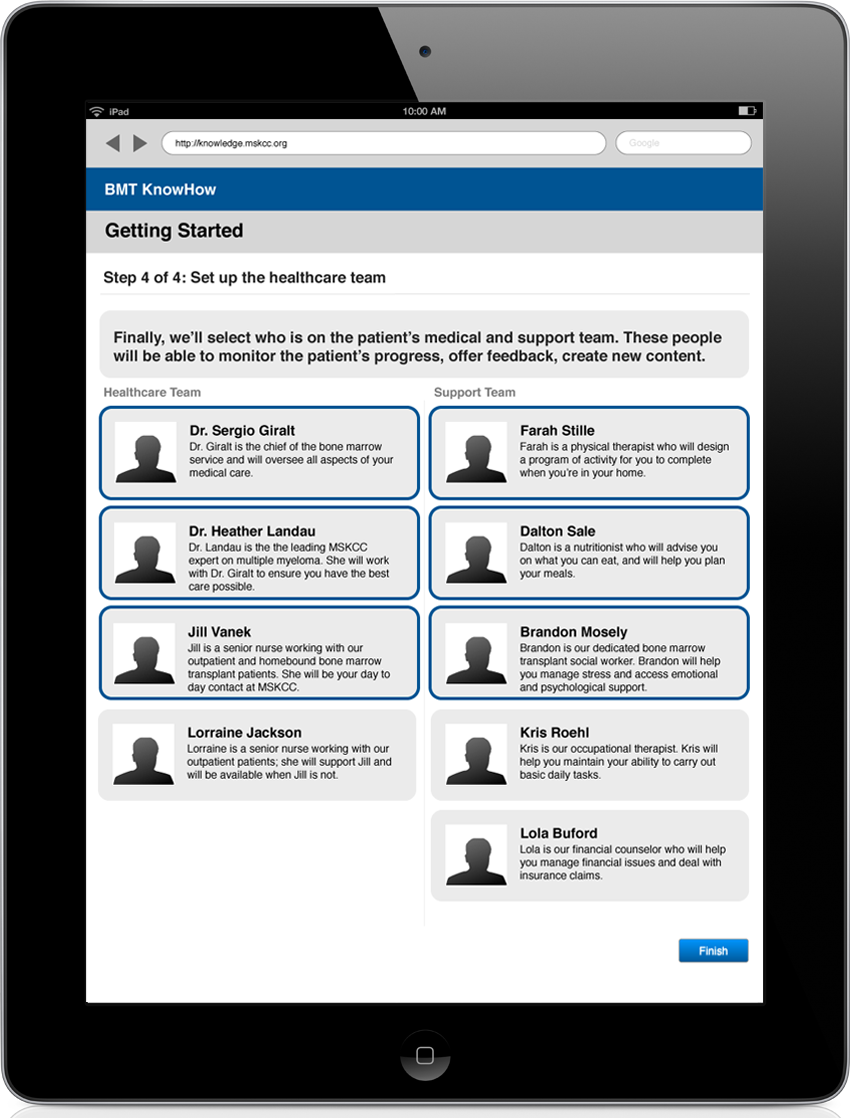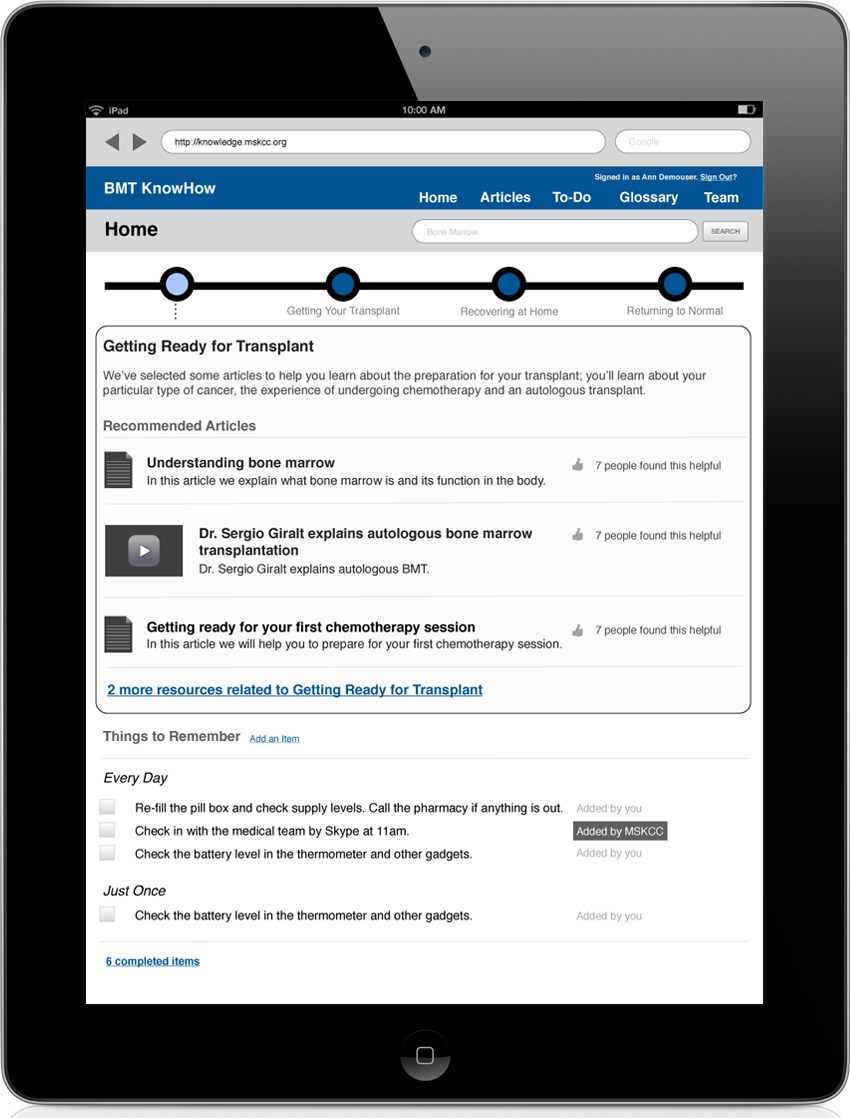CASE STUDY
Educational Tool for Bone Marrow Transplant Patients and Caregivers
OVERVIEW
Research suggests that patients who prepare and recover from a procedure at home have better outcomes. For a bone marrow transplant procedure, the road to prepare and recover is long and arduous for the patient and their caregivers.
Memorial Sloan-Kettering Cancer Center wanted to develop
an educational tool to guide families through each step of preparation and recovery process so that patients recover quicker and have a better treatment experience.
DISCOVERY
The purpose of the discovery phase was to improve our understanding of the current, outpatient bone marrow transplant process and how patients and caregivers prefer to inform themselves about their treatment
and caregiving journey.
Research tools
• Patient and caregiver interviews
• Healthcare professional interviews
• Workshops
• Affinity mapping
• User testing

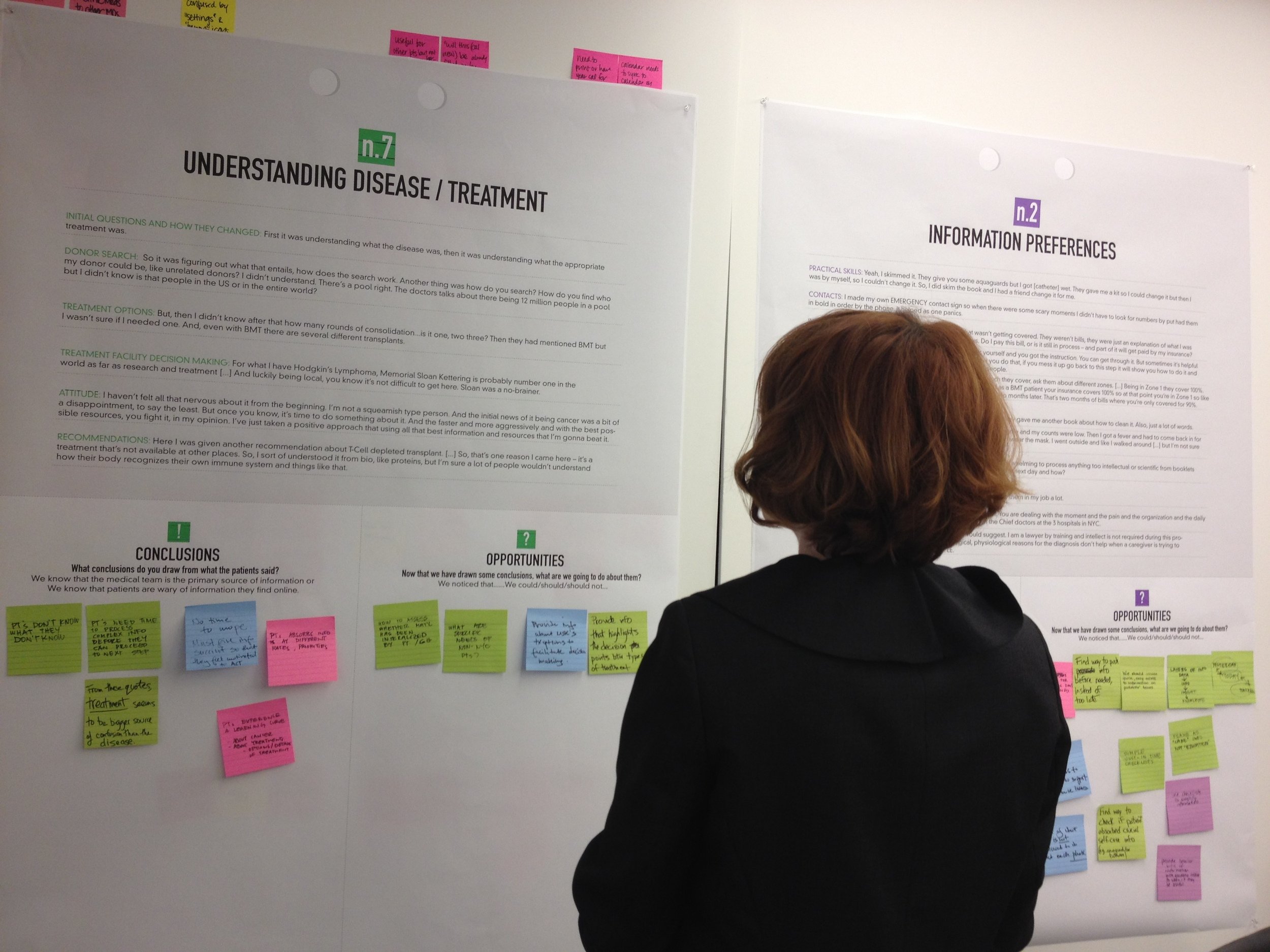
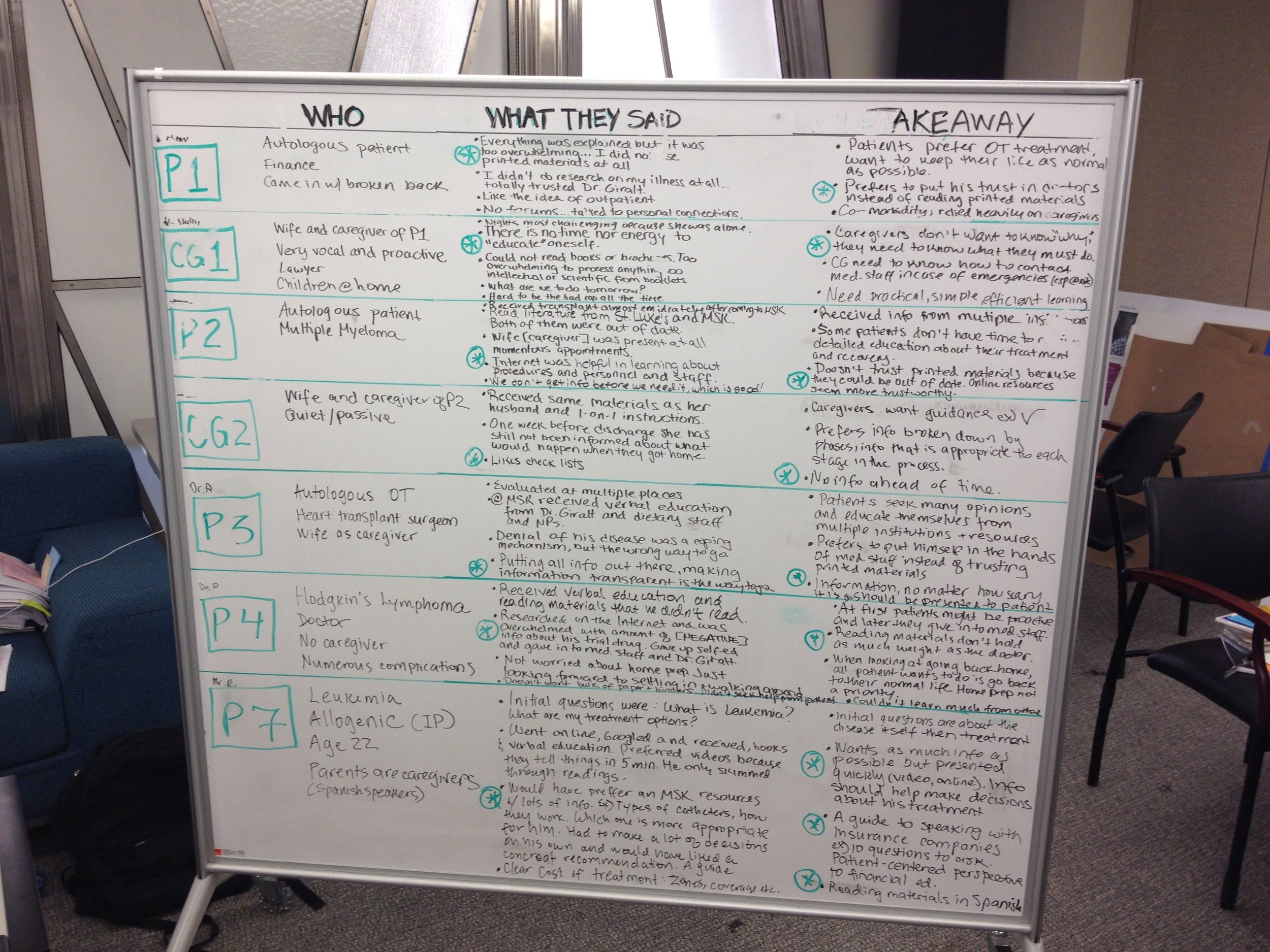
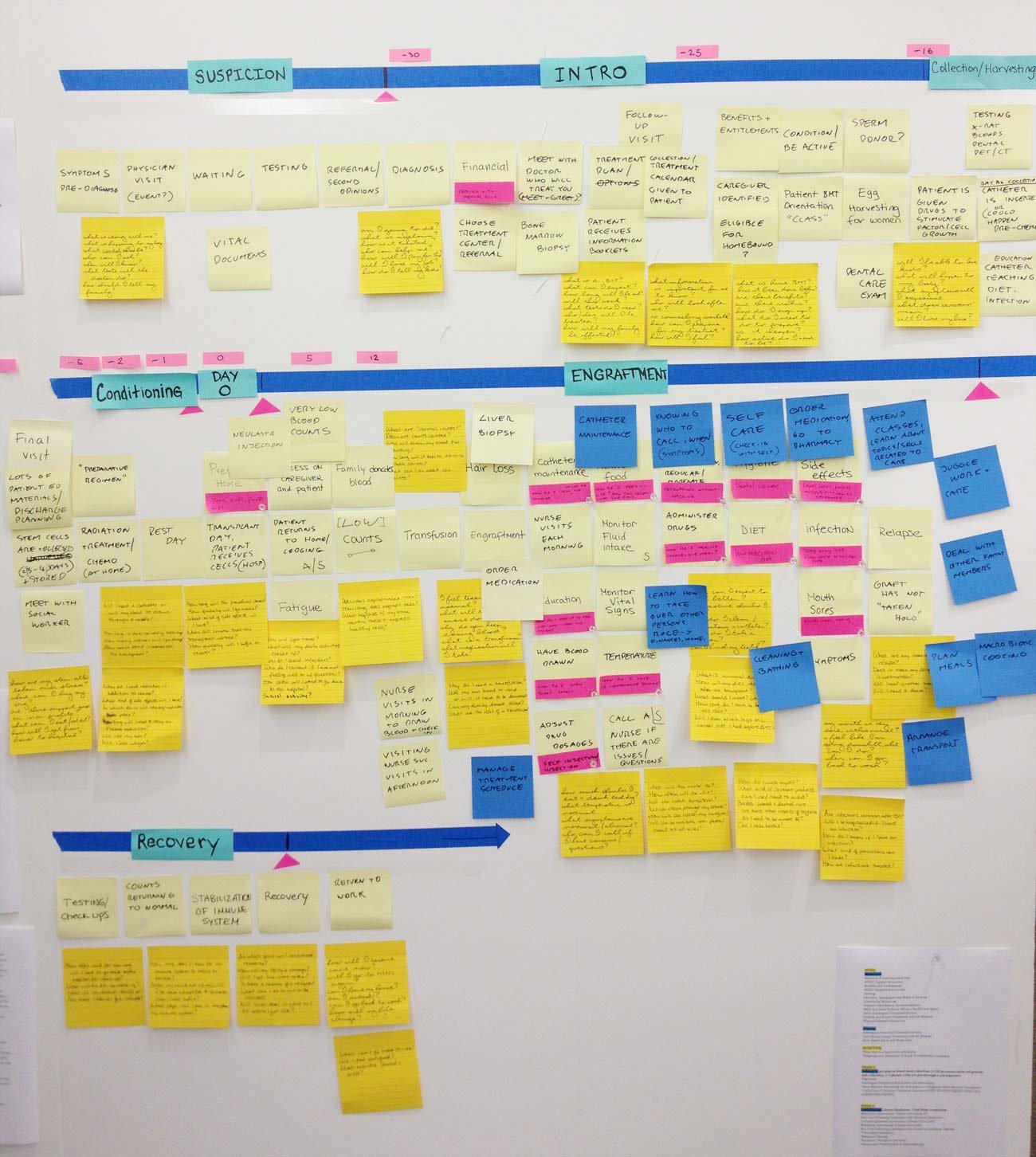

LEARNING AND INSIGHTS
Patients and caregivers cannot
retain information given to them
all given at once.
“Everything was explained at
the appointment, but it was too overwhelming and I didn’t use
the printed materials I was given.”
Patients don’t want to know “why” they want to know what they need to do.
“There is no time nor energy to educate oneself.”
How might we…
tailor content
for different information needs and learning styles?
Patients and caregivers trust the medical team with information over any other resource.
“I was overwhelmed at the amount of negative information about my trial drug, so I gave up self-education and gave in to medical staff.”
continue to foster a close relationship between
patients and the medical team?
Patients want information to be presented quickly and help them make decisions about their treatment.
”I wanted information from MSKCC about which catheters to get and how they work. I had to make a lot of decisions on my own.”
provide an actionable tool allowing patients and caregivers to understand,
decide and do?
IDEATION AND DESIGN
We knew that this digital tool needed to:
Be based on the personal timeline of treatment for each patient in order to provide the right information at the right time.
Allow real-time communication between the patient, caregiver and medical staff.
Provide variety of content, editorial, visual, audio
Help families feel organized and know what needs to be done at a specific point in the treatment.
